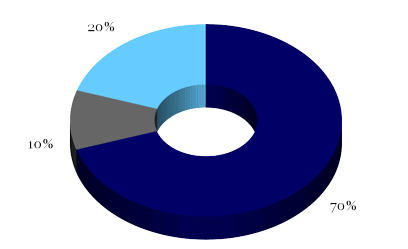
Participatory Meetings with a Clear Purpose
Restlessness. When things tingle inside me asking to happen. Big restless moments can be a sign of change that can cause anxiety, sometimes anxiety based in a fantasy that what will change won’t go well. Curious that for me “going well” is not usually defined. Pure fantasy.
The same fantasy is present when I’m working with others to create and plan spaces of encounter. The person who calls it is usually restless and does not have a clear sense of purpose. On top of that it’s common that there are many wills to be included in one single space.
To ‘manage’ anxiety is a big part of the work. I believe weddings might work this way – whoever is helping to organize probably uses the energy like this: 70% [bride and groom’s anxiety]; 10% [suppliers’ anxiety]; 20% [logistics and preparations]

From Restlessness to Purpose
The first part of the work needs more care and usually more time than the others. To clarify purpose for ourselves and others we are working with is key because it generates the boundary conditions in which our creative journey will be based.
Many times we receive the call to help create something and realize the purpose is not clear, it’s ambiguous or, worse, there are multiple ones. Anxiety grows when we make this explicit – the feeling might be that we are back to start if we redefine why we are doing this.
To give in to that anxiety and assume it’s all ok is a major trap in which I had the chance to fall many times. Either at the beginning of during the conversation, identify this and hold to the trunk of a good purpose – it’s the basis of it all.
Conditions for Collective Creation
In order to give space for paths (ideas, principles, how tos) to be created collectively, it is essential that we define conditions that point to the direction we are aiming for. This definition and clarity of purpose allow us to float into many paths respecting what is emerging and yet go towards the direction we set for.
Initial clarity prevents interventions to give direction during the process, an action as result of an unclear purpose and that generates frustration: “what do you mean? you ask us to create, but I’m not allowed to go there?”
To make direction explicit is to create conditions so participants themselves are able to define which paths do or do not make sense.
The richness of participatory meetings includes this capacity to change course and adapt to what is emerging, allowing unknown paths to surface. The role of a host is to dance with those changes and eventually bring to consciousness the times when there is a possibility that direction might have changed.
Purpose in the Voice of Participants
After clarity arrives it will be time to receive participants for the journey. Here is again time to revisit how much the purpose is clear and understood.
When facing complex situations there are usually multiple stakeholders involved, each one carrying their own hopes and anxieties. It is more than natural that, even if you invite clearly and explore purpose with mastery, still many will arrive with a fantasized idea of what will happen.
Explain why we are all together at the beginning helps, but even better is to open a space where participants themselves can explore in their own voice the reason of being together – both individually and as a group. When purpose is articulated with the voice of the collective, it allows an alignment of horizons before the journey starts.
Checklist of a Clear Purpose
- Transform restlessness into a single and clear purpose.
- Attend to time so there is enough for the purpose defined.
- When the time comes, just pay attention.